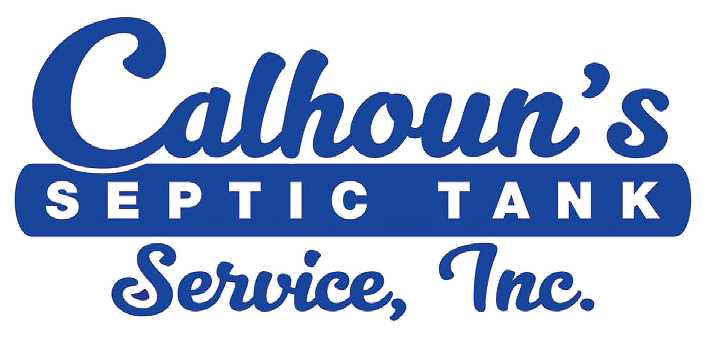New Septic Tank Installation
Whether you're replacing an old septic system or installing one for the first time, Calhoun’s Septic Tank Service is the team you can trust. With years of experience, expert knowledge, and a strong commitment to customer satisfaction, we stand apart from other septic service providers in the region.
Installing a septic tank is a complex task that requires precision and expertise. Even minor mistakes can compromise the efficiency and longevity of your system. That’s why our skilled professionals handle every step with care and attention to detail. We ensure your new system is installed correctly the first time—and we don’t consider the job complete until it’s fully operational, it passes inspection, and you’re 100% satisfied.
Drain Field Installation
When repairs no longer solve the problem, turn to the experts at Calhoun’s Septic Tank Service, Inc for reliable drain field installation. Our experienced team handles every project from start to finish with efficiency and precision.
Every home has different specifications, from the number of bedrooms or square footage to the year of build. Using this information, we can conduct a thorough inspection of your existing drain field to determine the exact requirements you’ll need for today and tomorrow. You’ll receive honest, expert guidance so you can make a fully informed decision with confidence.
We strive to make your drain field installation as convenient and stress-free as possible. Using only high-quality materials and industry-leading techniques, we ensure your new drain field is built to last, whether you need a mound system or an in-ground installation.
A properly designed and installed septic system can serve your home for decades. Trust the professionals at Calhoun’s Septic Tank Service to get the job done right—the first time.
How to Know When Your Septic Tank Needs Upgrading
If you’ve noticed any of the following warning signs, your system may need attention:
- Pooling water or soggy spots in your yard
- Lush, green patches of grass over the drain field
- Unpleasant odors near the tank or drain field
- Slow-draining sinks, tubs, or toilets
- Gurgling sounds in your plumbing
- Sewage backups in your home
Even minor issues can quickly escalate, so don’t wait—our experienced team will inspect your system, diagnose the problem, and provide prompt, professional repairs to get things back on track. At Calhoun’s, we’re committed to honest service, clear communication, and long-lasting solutions. Contact us today if you suspect a problem with your septic system.
Types Of Septic Systems
The various septic systems available to you in Florida:
Here's a breakdown of the common types of septic systems that may be suitable for your property or business in Florida:
- Conventional Septic Systems
- Chamber Systems
- Drip Distribution Systems
- Aerobic Treatment Units (ATUs)
- Septic Mound Systems
Conventional Septic Systems:
A conventional septic system is one of the most commonly used wastewater treatment methods in areas without access to municipal sewer systems. It relies on natural processes and simple components to treat and dispose of household wastewater.
How It Works
1. Septic Tank
- Purpose: Separates solids from liquids.
- Process:
- Wastewater from the house flows into the septic tank.
- Solids settle at the bottom to form sludge.
- Fats, oils, and grease float to the top as scum.
- The effluent (liquid layer) exits the tank and flows into the drainfield.
2. Drainfield (Leach Field)
- Purpose: Provides additional treatment by the soil.
- Process:
- Effluent flows through perforated pipes laid in gravel-filled trenches.
- As the effluent seeps into the surrounding soil, it is naturally filtered and treated by soil microbes and physical processes.
Advantages of Conventional Systems
- Simplicity: Straightforward design; fewer mechanical parts.
- Cost-Effective: Typically, less expensive to install and maintain compared to advanced systems.
- Longevity: Can last decades with proper care (regular pumping and inspection).
Disadvantages of Conventional Systems
- Soil Limitations: Requires well-draining soils. Not ideal for:
- Sandy or clay-heavy soils
- Areas with high water tables
- Clogging Risk: Lack of maintenance can lead to:
- Drainfield failure
- Backups and costly repairs
- Treatment Efficiency: Less effective at removing:
- Nutrients (e.g., nitrogen, phosphorus)
- Pathogens compared to systems like aerobic treatment units (ATUs)
Chamber Systems:
How the Chamber Septic System Works
- Effluent Flow: After wastewater exits the septic tank, the partially treated liquid (effluent) flows into a series of connected chambers.
- Chamber Design: These chambers are typically plastic structures with open bottoms and slotted sides. They sit directly on the soil, allowing effluent to:
- Seep through slits on the sides.
- Percolate through the open bottom into the surrounding soil.
- Soil Treatment: The surrounding soil acts as a natural filter, providing the final treatment before the water returns to the groundwater system.
Advantages of Chamber Systems
- No Gravel Required: Ideal for remote or hard-to-access areas where hauling gravel is difficult or expensive.
- Adaptable to High Water Tables: Their design helps reduce the depth needed for installation.
- Flexible Installation: Lightweight and modular, chambers are easier and quicker to install than traditional gravel systems.
- Environmentally Friendly: Reduces the need for natural resource extraction (gravel).
Considerations
- Soil Suitability: Still requires adequate percolation rates in the soil.
- Maintenance: Like all septic systems, it needs regular inspection and pumping of the septic tank.
- Local Codes: Must comply with local health and environmental regulations.
Drip Distribution Systems:
A drip distribution system is a modern method of wastewater disposal that delivers pretreated effluent directly into the soil through a network of small-diameter tubing with emitters. This system mimics subsurface irrigation, making it a flexible and efficient option—especially in areas with limited space, irregular topography, or sensitive landscaping.
Key Features and Benefits
- Subsurface Delivery: Effluent is released below the soil surface, which:
- Minimizes evaporation and surface runoff
- Reduces exposure and odors
- Precise Application: Emitters release effluent at controlled, low volumes—ensuring:
- Uniform distribution
- Efficient absorption in the root zone
- Adaptability: Effective in a variety of:
- Soil types (with or without pressure dosing)
- Sloped or irregularly shaped lots
- Minimal Environmental Impact:
- Less disruptive to existing vegetation or landscaping
- Lower visual footprint than traditional systems
- Nutrient Uptake Potential: Effluent released slowly can be absorbed by plants, aiding in:
- Natural nutrient removal
- Support for landscape or agricultural growth
Main Components
| Component | Function |
|---|---|
| Septic Tank / Pretreatment Unit | Removes solids and reduces biological load before effluent is dispersed |
| Pump Tank and Pump | Pressurizes and moves effluent through the drip tubing |
| Drip Tubing (Distribution Lines) | Buried flexible tubing that carries effluent across the site |
| Emitters | Small, calibrated openings in the tubing that slowly release effluent |
| Control System | Timers, valves, and pressure regulators that manage flow and timing |
| Filters | Protect the tubing and emitters by removing remaining solids |
Common Applications
- On-Site Wastewater Treatment: Used when conventional leach fields are unsuitable due to space or soil limitations.
- Irrigation Systems: Ideal for landscapes, gardens, and lawns in water-scarce areas.
- Agricultural Use: Efficient for targeted irrigation in vineyards, orchards, or other plant rows.
Aerobic Treatment Units (ATUs) :
Aerobic Treatment Units (ATUs) are self-contained, electrical wastewater treatment systems that utilize an aerobic process for digestion, similar to septic tanks but with enhanced treatment. They inject oxygen into a treatment tank, boosting bacterial activity to break down organic waste and improve wastewater quality. ATUs are often favored for areas with limited space, poor soil conditions, or high-water tables, as they can provide more comprehensive treatment than traditional septic systems.
Key Features of ATUs
- Aerobic Process: Oxygen is injected into the tank to stimulate aerobic bacteria, improving the breakdown of waste and overall treatment quality.
- Compact Size: Designed for smaller spaces—ideal for properties with limited land area.
- Environmental Protection: Produces cleaner effluent, reducing the risk of groundwater or surface water contamination.
- Versatility: Can be installed in areas with poor soil, high water tables, or other challenging conditions.
- Regulatory Compliance: Meets stricter environmental standards in many jurisdictions, often required in sensitive areas.
- Enhanced Treatment Performance: Provides a higher level of wastewater treatment than standard septic systems.
- Maintenance Needs: Requires regular maintenance and inspections by certified professionals to ensure optimal operation.
- Flexible Dispersal Options: Compatible with various systems such as spray irrigation or drip distribution.
- Optional Disinfection: Some models include UV or chlorine disinfection to further reduce pathogens in the effluent.
- Cost Considerations: Higher upfront cost, but may offer long-term savings through better performance and potential for water reuse.
Septic Mound Systems:
A septic mound system is an engineered alternative to conventional drain fields, designed for properties where standard septic systems are not feasible due to poor soil conditions, high water tables, or shallow bedrock.
How a Mound System Works
- Effluent Transfer: Wastewater from the septic tank flows into a pump chamber.
- Controlled Dosing: A pump doses the effluent into the mound in timed, measured amounts to prevent overloading.
- Effluent Distribution: The effluent travels through perforated pipes laid in a gravel bed at the top of the mound, then trickles down.
- Filtration and Treatment: As the wastewater percolates through layers of sand and soil, it is naturally filtered and biologically treated before reaching the groundwater.
Key Components & Features
- Raised Drain Field: A constructed mound made of sand and gravel sits above ground level to provide adequate filtration depth.
- Multi-layered Structure: Includes tilled soil, sand, a distribution layer, and sometimes a geotextile fabric to prevent clogging.
- Controlled Dosing System: Ensures even distribution of effluent and prevents saturation of the soil.
Benefits of Mound Systems
- Effective in Challenging Soil Conditions: Ideal for areas with shallow bedrock, clay soils, or high water tables.
- Enhanced Effluent Treatment: Natural filtration through the mound improves water quality and protects groundwater.
- Adaptability: Can be designed to fit various landscapes and terrain types.


